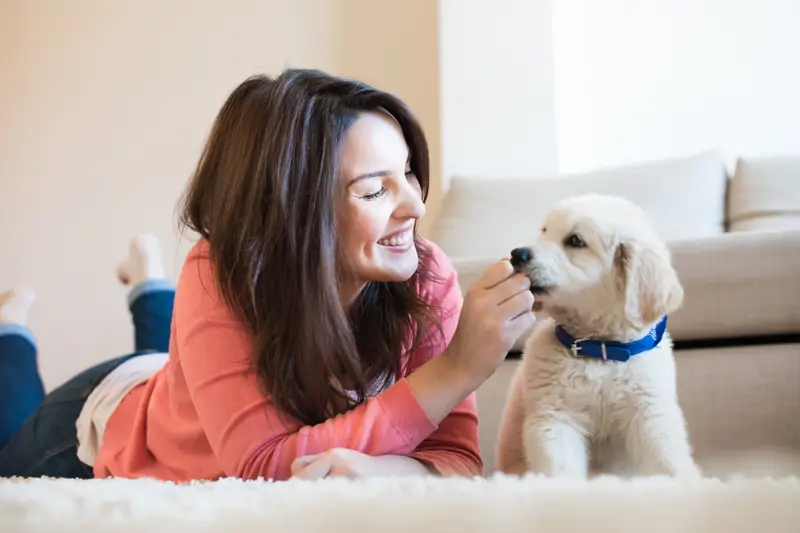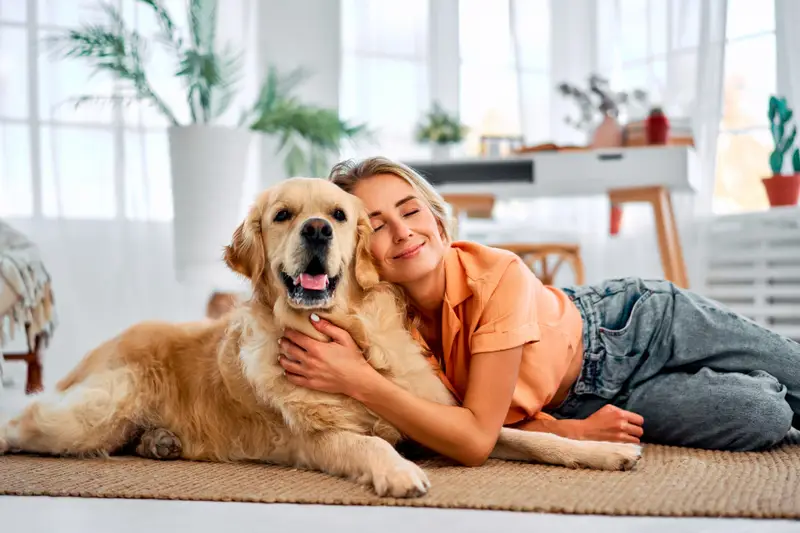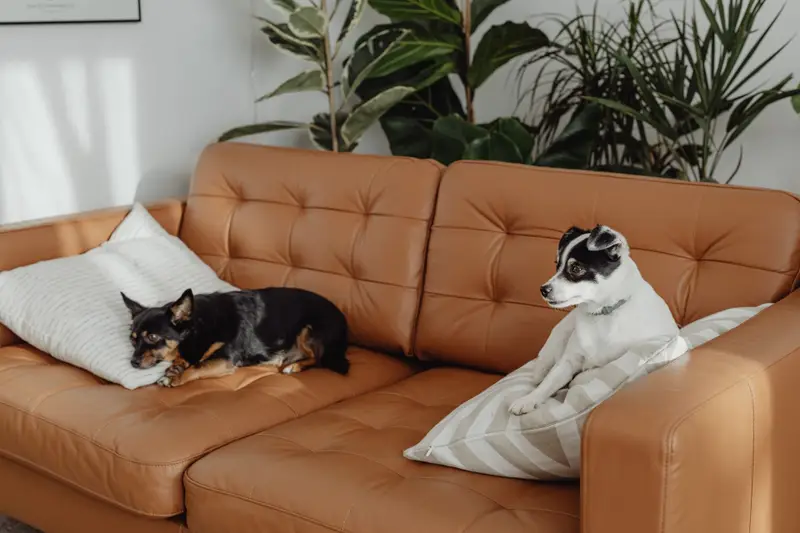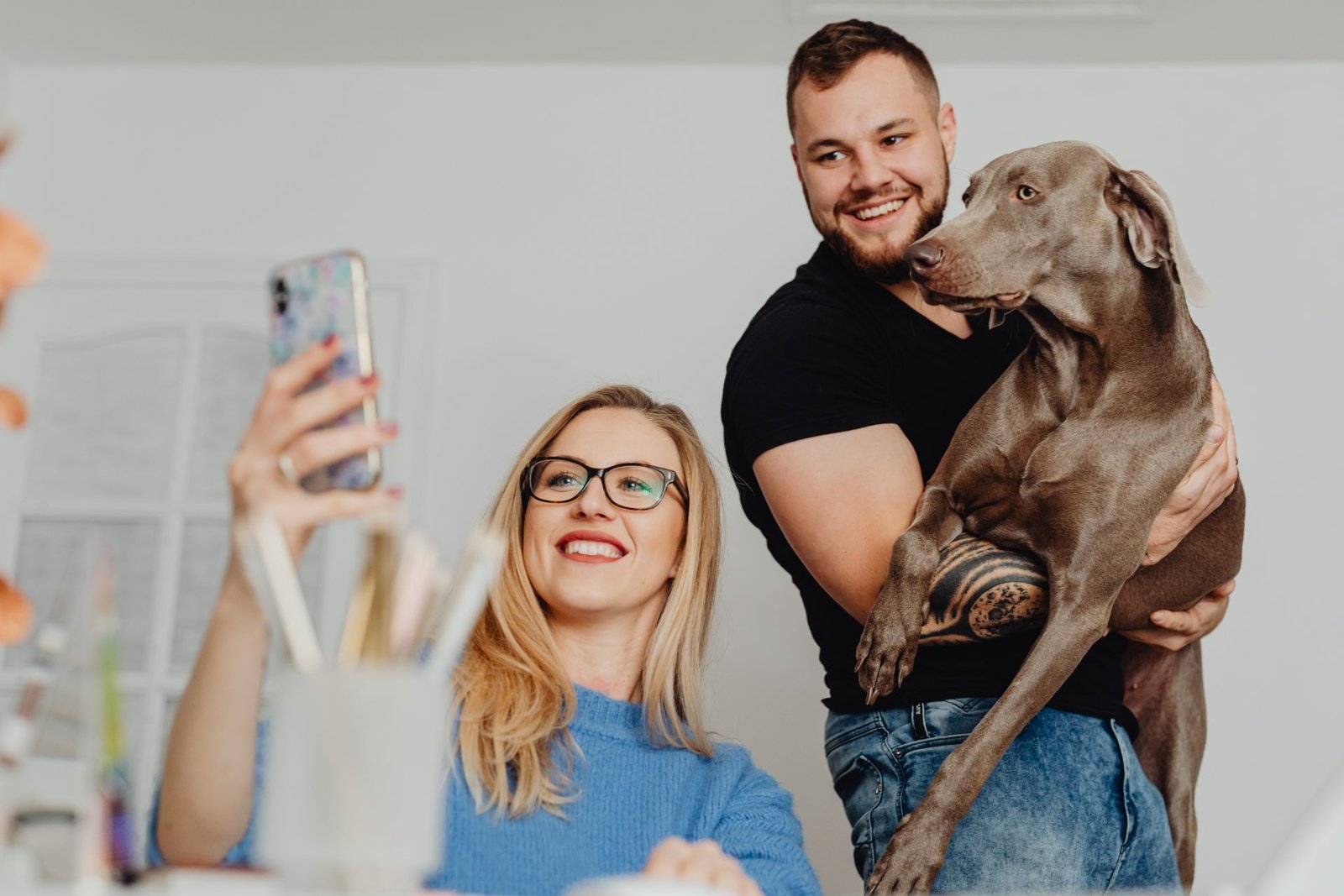TL;DR: Leaving your puppy for vacation requires choosing between kennel structure or personalized sitter care, doing a trial run to test the arrangement, and preparing your puppy with practice separations—so you can actually board that plane without spiraling into guilt.
Getting over the nerves of leaving your puppy for vacation starts with understanding that your anxiety is louder than the actual risk. The right preparation—trial days, detailed instructions, and choosing care that matches your puppy’s energy level—transforms panic into confidence that your dog will be fine without you.
Most first-time puppy parents face the same impossible choice: a kennel that feels too impersonal or a sitter who might be overwhelmed by their dog’s chaos. The guilt spiral starts immediately. What if they think you abandoned them? What if they’re lonely? What if the sitter can’t handle the pulling and jumping?
Here’s what actually happens: your puppy adapts faster than you do. They live in the present, not in worry about when you’ll return. The real challenge isn’t whether your puppy can handle your absence—it’s whether you can handle leaving without catastrophizing every scenario.
Why leaving your puppy feels impossibly hard
You’ve built a routine that feels unbreakable
When you’ve been your puppy’s entire world since adoption, the idea of disrupting that bond triggers every protective instinct. You know their schedule, their quirks, their exact potty timing. Handing that knowledge to someone else—someone who doesn’t automatically know when your dog’s about to destroy something—feels reckless.
The truth? Dogs are better at adjusting to new caregivers than we give them credit for. As long as their basic needs are met—food, exercise, attention—most puppies roll with changes faster than their anxious owners.
Puppies have reputations for being “too much”
If your puppy pulls on the leash, jumps on people, or operates at maximum chaos 80% of the day, you’re probably worried they’ll overwhelm whoever watches them. That concern isn’t unfounded—some sitters genuinely can’t handle high-energy young dogs.
That’s why trial runs exist. Better to discover your puppy’s too much for a particular sitter during a paid test day than after you’ve already left for your trip.
You’re projecting your feelings onto your dog
You’ll miss your puppy intensely. You assume they’ll mirror that emotion—sitting sadly by the door, wondering where you went, feeling abandoned.
Dogs don’t work that way. Your puppy will be occupied with new smells, different play routines, meals, and attention from whoever’s watching them. They’re not replaying your departure on a loop. They’re just living their current moment.
Kennel vs. in-home pet sitter: What matters for puppies
The kennel-versus-sitter debate isn’t about which option is objectively better. It’s about which setup matches your specific puppy’s temperament and needs.
When kennels work better
If your puppy thrives around other dogs and needs constant stimulation to avoid destructive behavior, a quality kennel offers:
– Multiple supervised play sessions daily with dogs their size
– Professional staff trained to handle high-energy puppies
– Structured routines that prevent boredom
– Regular photo updates so you’re not refreshing your phone compulsively
The downside? Your puppy spends nights in a crate. If picturing them alone in a kennel after playtime ends makes you nauseous, this might not be your option—even if it’s functionally fine for your dog.
When in-home sitters work better
If your puppy’s more anxious, needs individualized attention, or you simply can’t stomach the kennel image, a dedicated sitter provides:
– One-on-one time without competing for attention
– Flexibility to match your home routine exactly
– No crate time unless that’s part of their normal schedule
– A familiar environment if they stay at your house
The risk? If your puppy’s truly exhausting—constant pulling, jumping, demanding play—you need a sitter experienced with young, energetic dogs. Someone who watches adult couch potatoes won’t cut it.
What your puppy actually needs (regardless of setting)
Your puppy doesn’t care whether they’re in your house or somewhere else. They care about:
– Enough physical exercise to tire them out (this is non-negotiable for puppies)
– Mental stimulation through play, training, or puzzle toys
– Consistent feeding and potty schedules
– Positive interactions with whoever’s providing care
A kennel that provides three solid play sessions daily can outperform a sitter who lets your puppy sit bored in your living room. Setting matters less than quality of care.
How to choose the right pet sitter without overthinking
Meet potential sitters in person before deciding
Schedule a meet-and-greet and watch how the sitter interacts with your puppy. Do they seem confident with high energy? Do they know how to redirect jumping without getting flustered? Do they ask substantive questions about your puppy’s routine and behavior?
If someone seems overwhelmed during a 20-minute introduction, they’ll be underwater during an actual multi-day booking.
Do a trial day before your actual trip
Book the sitter or kennel for a paid trial run—either a few hours, a full day, or an overnight—at least two weeks before you leave. This reveals:
– How your puppy handles the separation when you’re truly gone
– Whether the sitter can manage your dog’s actual energy level (not the edited version you described)
– What adjustments need to happen before the real booking
A trial that goes badly is still valuable. It’s a filter that prevents vacation disaster.
Ask questions that reveal experience with puppies
For kennels:
– “What’s your protocol for puppies who are overstimulated in group play?”
– “How many staff members supervise playtime, and what’s the dog-to-staff ratio?”
– “Can I visit the facility and see where my puppy would sleep?”
– “How do you handle a puppy who’s not eating or seems stressed?”
For in-home sitters:
– “What’s the most challenging young dog you’ve handled, and how did you manage it?”
– “How much daily exercise will you provide, and what does that look like?”
– “What’s your approach to leash pulling or jumping?”
– “Will you follow my current training methods, or do you prefer your own?”
The best answer isn’t “your puppy will be fine, don’t worry.” It’s a detailed explanation of their process.
Verify credentials and reviews
When booking through a platform, read reviews specifically mentioning puppies, high-energy dogs, or first-time separations. Look for patterns—do multiple people mention the sitter’s patience with difficult behaviors?
For kennels, confirm they’re licensed and insured. For independent sitters, verify they’re background-checked and have references you can contact.
Preparing your puppy for separation before you leave
Practice progressively longer absences
Start leaving your puppy with a trusted person—friend, family member, or the sitter you’ve chosen—for incrementally longer periods. Two hours, then four, then a full workday, then overnight.
This teaches your puppy that you always come back. It also teaches you that they’re fine without you, which is the harder lesson.
Exhaust them physically before departure
On the day you leave, take your puppy for the longest walk or most intense play session you can manage. A tired puppy settles faster, stresses less, and has minimal energy to fixate on your absence.
Think of it as pre-loading their calm for the first few hours you’re gone.
Maintain their exact routine
Give your sitter detailed written instructions covering feeding times, walk schedules, potty routine, play preferences, and bedtime. The more their day mirrors normal life, the less disruptive your absence feels.
If your puppy eats at 7am and 6pm, don’t let the sitter shift it to 10am and 9pm because it’s more convenient for them. Routine equals security for young dogs.
Leave one familiar item (not your entire closet)
Pack a worn shirt that smells like you, your puppy’s favorite toy, or their regular blanket. Familiar scents provide comfort when everything else is different.
One item is enough. Your puppy doesn’t need your entire wardrobe—just a scent anchor that says “my person exists.”
Make your departure boring
When you leave, keep it low-key and emotionless. No dramatic goodbyes, no extended explanations they can’t understand, no tearful hugs that signal something’s wrong.
A calm, confident exit communicates “this is normal, not a crisis.” Save the tears for the car. 😅
What to tell your pet sitter (so everyone survives)
Your sitter needs the real version of your puppy, not the polished description.
Your puppy’s actual energy level
“He’s energetic” means nothing. Be specific: “He needs 45 minutes of hard exercise in the morning or he’ll destroy furniture by noon” gives your sitter actionable information.
Underselling your puppy’s chaos helps no one. Overselling it means experienced sitters might decline the booking.
Current training and how to maintain it
If you’re working on loose-leash walking, explain your exact method. Do you stop moving when your puppy pulls? Use a specific command? Reward with treats at random intervals?
Consistency matters. If the sitter undermines your training by letting your puppy drag them around the block, you’ll undo weeks of progress.
What “normal” looks like for your specific puppy
How much water do they typically drink? How many times do they potty daily? When do they nap? What does appropriate play look like versus overstimulation?
Baseline behavior helps your sitter recognize when something’s off—whether that’s illness, stress, or just an adjustment period.
Emergency protocols and vet information
Leave your vet’s contact info, emergency backup contacts, and clear instructions about when to call you versus when to act independently.
The Petme Protection Plan covers unexpected vet visits up to $1,000 per incident, which removes the financial panic if your puppy gets injured or sick while you’re traveling.
House rules that prevent confusion
Can your puppy go on furniture? Are certain rooms off-limits? What’s the protocol for accidents inside?
Spelling out house rules prevents misunderstandings that create problems later.
Managing your anxiety while you’re away
Set specific check-in expectations upfront
Decide with your sitter how often you’ll receive updates—once daily, twice daily, or only if there’s an issue. Then stick to that agreement.
Constant check-ins amplify your anxiety without helping your puppy. They also signal to your sitter that you don’t trust their judgment, which damages the working relationship.
Trust the preparation you already did
You researched sitters. You did a trial run. You left detailed instructions. You chose someone capable based on evidence, not hope.
All the controllable variables have been controlled. Now you have to tolerate the uncertainty of the uncontrollable ones—which exist whether you’re home or away.
Remind yourself: Dogs live in the present
Your puppy isn’t sitting by the door constructing abandonment narratives. They’re engaged with their immediate experience—playing, eating, exploring, sleeping.
The mental movie you’re playing about their loneliness exists in your head, not in their reality.
Focus on the reunion instead of the separation
When you walk back through that door, your puppy will react like you’ve been gone for years. The tail-wagging, jumping, full-body wiggling joy—that’s what you’re working toward.
Your puppy won’t be traumatized by your absence. They’ll just be thrilled you’re back.
When trial runs reveal the wrong fit
Sometimes the trial proves a sitter can’t handle your puppy—and that’s exactly why you did it.
High energy overwhelms inexperienced sitters
If your trial day ends with the sitter looking exhausted and saying “wow, he’s a lot,” that’s valuable information. Some people genuinely can’t manage young, high-energy dogs.
This isn’t failure. It’s filtering. You found out before your actual trip, which means you can find someone better equipped.
Your puppy doesn’t settle with certain people
Some dogs click immediately with new caregivers. Others need time to build trust. If your trial run shows your puppy stressed, anxious, or refusing to engage, that particular sitter might not be the match.
Try someone else. Chemistry between dogs and sitters is real, and forcing a bad match benefits no one.
Communication styles don’t align
Maybe the sitter doesn’t update you as promised. Maybe they ignore instructions you considered non-negotiable. Maybe they handle your puppy’s behavior in ways that contradict your training.
These are deal-breakers. Find someone whose communication and approach align with your expectations.
Why this matters for pet sitting
Learning to leave your puppy for vacation builds a skill that benefits both of you long-term. The first separation is always the hardest. After that, future trips get progressively easier because you’ve proven—to yourself and your dog—that separation isn’t abandonment.
When you find a trusted sitter who works well with your puppy, you’re not starting from zero every time you travel. You’ve established a relationship. Your puppy recognizes them. The sitter understands your dog’s quirks. Future bookings become routine instead of crisis.
What to tell your sitter about your anxious puppy
– Separation experience: “This is his first time being away from us for more than a few hours.”
– Energy management: “He needs at least 30 minutes of intense play morning and evening to stay calm.”
– Comfort strategies: “He settles best with his blanket and a stuffed Kong.”
– Training consistency: “We’re using the stop-and-go method for leash pulling—please stick with that.”
– Update preferences: “Send one photo update daily unless something urgent happens.”
Questions to ask sitters about handling puppies
– “What’s the most challenging young dog you’ve cared for, and what made them difficult?”
– “How do you tire out a high-energy puppy when weather prevents outdoor play?”
– “What’s your strategy if my puppy seems stressed or won’t eat?”
– “How much total exercise will you provide each day, and what does that include?”
– “Will you follow my training methods exactly, or adapt them based on what works?”
Finding the right sitter through Petme
When you’re choosing your first pet sitter, the platform matters as much as the individual sitter. Petme connects you with background-checked, reviewed sitters who have experience with everything from anxious puppies to hyperactive chaos agents.
Every booking includes the Petme Protection Plan, which covers emergency vet visits up to $1,000 per incident. If your puppy gets injured or sick while you’re traveling, you’re not choosing between your budget and your dog’s health.
Find a sitter near you and start with a trial day. Your puppy will adapt faster than you expect. So will you.
Frequently asked questions
Is it normal to feel guilty about leaving my puppy for vacation?
Completely normal. The guilt means you care, not that you’re doing something wrong. Your puppy will adjust to your absence faster than you’ll adjust to theirs—which is the part that makes guilt irrational but persistent.
How long can I leave my puppy with a pet sitter?
Most puppies handle 3-5 days without issue if they’re with a capable sitter or quality kennel. Longer trips are possible, but doing a trial overnight first helps you gauge whether your specific puppy tolerates extended separations well.
Should I choose a kennel or in-home sitter for my high-energy puppy?
If your puppy thrives around other dogs and needs constant stimulation, a kennel with multiple daily play sessions might be better. If they’re anxious or need individualized attention, an experienced in-home sitter works better. Try both during trial runs if you’re uncertain.
What if my puppy doesn’t behave for the sitter?
That’s why trial runs exist. If your puppy’s pulling, jumping, or overwhelming the sitter during a test day, you can either find someone better equipped for high-energy dogs or adjust your training before your trip.
How do I prepare my puppy for their first time away from me?
Practice progressively longer separations beforehand, tire them out physically before you leave, maintain their exact routine, and provide one familiar comfort item. Preparation reduces both their stress and yours.
Will my puppy think I abandoned them when I leave for vacation?
No. Dogs don’t process abandonment the way humans do. Your puppy will be focused on their immediate experience—food, play, attention, sleep. When you return, they’ll be excited, not resentful.
How often should I check in with the sitter while I’m away?
Once or twice daily is reasonable for most owners. More frequent check-ins increase your anxiety without benefiting your puppy. Trust your sitter to contact you immediately if there’s an actual problem.
What if the sitter says my puppy was too difficult to handle?
Some sitters lack experience with high-energy young dogs. That’s a mismatch, not a failure. Find a sitter who specializes in puppies or consider a kennel with professional staff trained for difficult behaviors.
Conclusion: Your puppy will survive (and so will you)
Getting over the nerves of leaving your puppy for vacation requires separating your anxiety from actual risk. The right preparation—choosing experienced care, doing trial runs, maintaining routines—turns irrational guilt into justified confidence.
Your puppy doesn’t need you to be perfect. They need you to set them up for success when you’re not around. A trusted sitter, detailed instructions, and enough physical exercise make the difference between a smooth separation and a stressful one.
Book the vacation. Do the trial run. Trust the process. Your puppy will have a better time than you’re imagining. And when you return—relaxed, recharged, ready to be fully present—they’ll remind you why taking care of yourself makes you a better dog owner.











